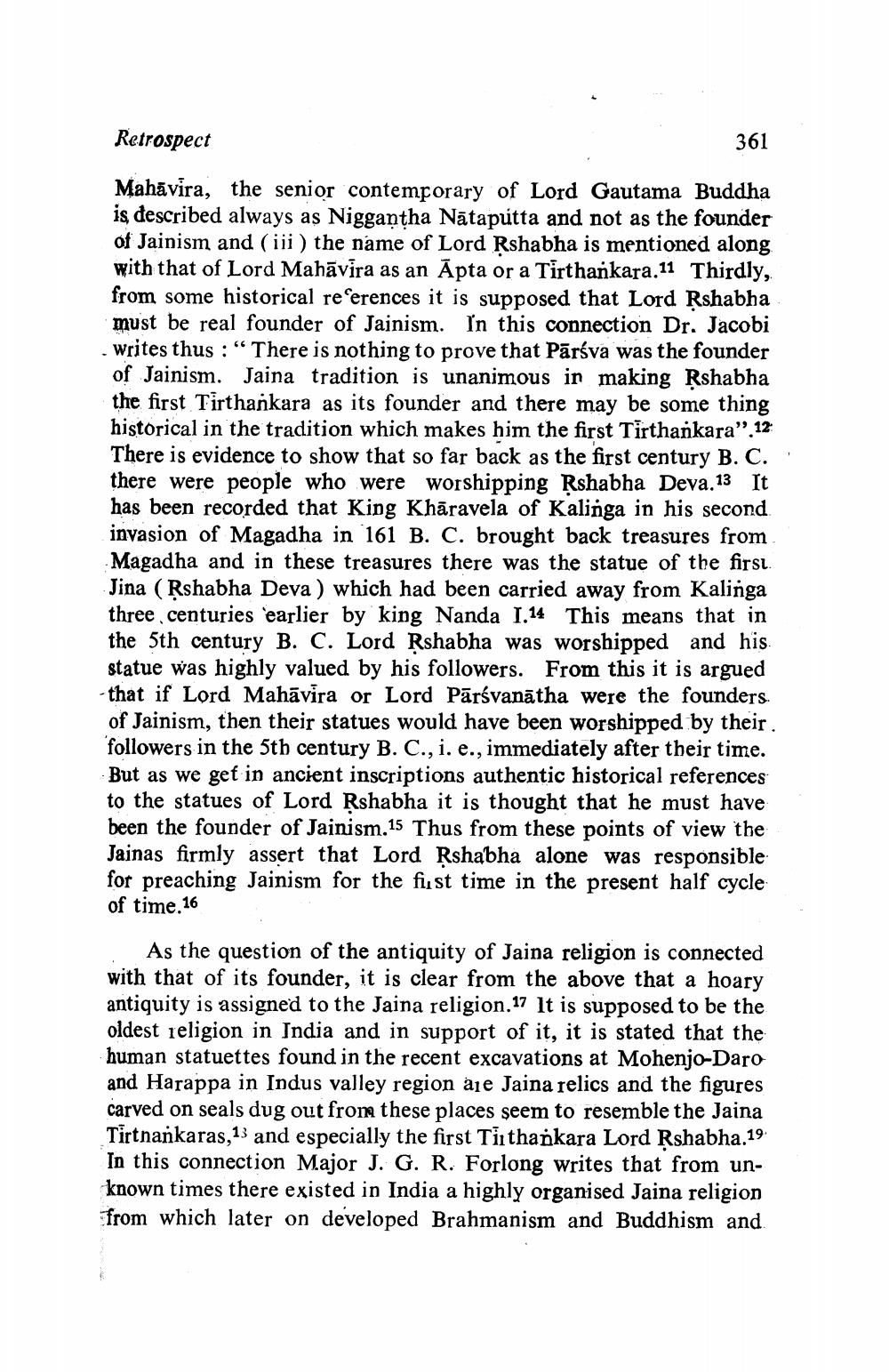________________
Retrospect
361
Mahāvira, the senior contemporary of Lord Gautama Buddha is described always as Niggantha Nātaputta and not as the founder of Jainism and (iii) the name of Lord Rshabha is mentioned along with that of Lord Mahāvira as an Āpta or a Tirthankara.11 Thirdly, from some historical references it is supposed that Lord Rshabha must be real founder of Jainism. In this connection Dr. Jacobi writes thus : “ There is nothing to prove that Pārsva was the founder of Jainism. Jaina tradition is unanimous in making Rshabha the first Tirthankara as its founder and there may be some thing historical in the tradition which makes him the first Tirthankara". 12 There is evidence to show that so far back as the first century B. C. there were people who were worshipping Rshabha Deva.13 It has been recorded that King Khāravela of Kalinga in his second invasion of Magadha in 161 B. C. brought back treasures from Magadha and in these treasures there was the statue of the first Jina (Ķshabha Deva ) which had been carried away from Kalinga three centuries earlier by king Nanda 1.14 This means that in the 5th century B. C. Lord Rshabha was worshipped and his statue was highly valued by his followers. From this it is argued that if Lord Mahāvira or Lord Pārsvanātha were the founders of Jainism, then their statues would have been worshipped by their. followers in the 5th century B. C., i. e., immediately after their time. But as we get in ancient inscriptions authentic historical references to the statues of Lord Rshabha it is thought that he must have been the founder of Jainism.15 Thus from these points of view the Jainas firmly assert that Lord Rshabha alone was responsible for preaching Jainism for the fist time in the present half cycle of time. 16
As the question of the antiquity of Jaina religion is connected with that of its founder, it is clear from the above that a hoary antiquity is assigned to the Jaina religion.17 It is supposed to be the oldest religion in India and in support of it, it is stated that the human statuettes found in the recent excavations at Mohenjo Daro and Harappa in Indus valley region aje Jaina relics and the figures carved on seals dug out from these places seem to resemble the Jaina Tirtnankaras,13 and especially the first Tithankara Lord Rshabha.19 In this connection Major J. G. R. Forlong writes that from unknown times there existed in India a highly organised Jaina religion from which later on developed Brahmanism and Buddhism and




